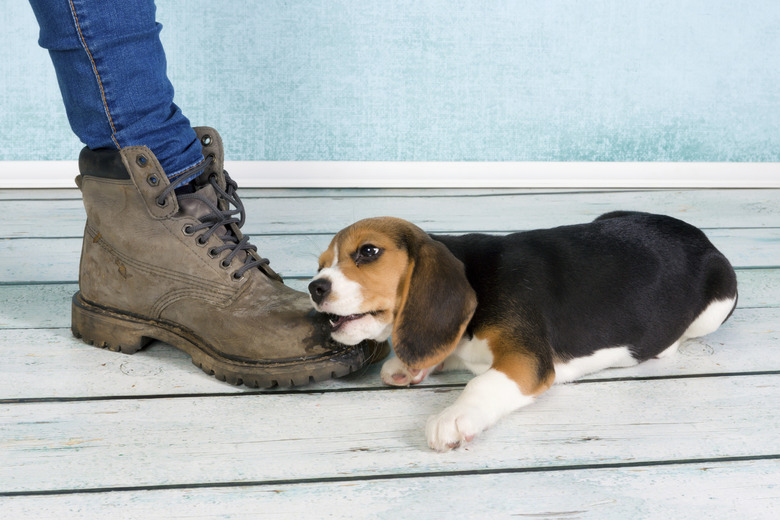How To Tell How Old My New Puppy Is
The best way to determine the age of a puppy is by examining his teeth. Like humans, dogs have a full set of baby teeth — technically called deciduous teeth — that eventually are placed by a set of permanent teeth. Because most puppies progress through this process at about the same rate, the type of teeth present in a puppy's mouth can indicate its age.
Deciduous Teeth
Deciduous Teeth
When puppies are born, they have toothless mouths. At about 4 weeks of age, a puppy's deciduous teeth begin erupting. The incisors are the first teeth to emerge, followed by the canines and then the premolars. By the time they are about 6 weeks old, most puppies have a full set of 28 deciduous teeth, including 12 incisors, four canines and 12 premolars. Puppies have flat, rectangular teeth, called incisors, in the front of their mouths. Conically shaped canine teeth flank the incisors on both the top and bottom jaw. While puppies have no true molars, they have premolars that sit behind the canine teeth.
The Process of Replacement
The Process of Replacement
Although the timing is slightly variable in some cases — for example, large breeds often develop permanent teeth sooner than smaller breeds do — the process of tooth replacement is relatively consistent across breed lines. Incisors are the first of the permanent teeth to appear, usually bursting through the gum line around 3 or 4 months of age. The canines and premolars emerge next, usually around the age of 4 or 5 months. By 6 or 7 months of age, the molars finally cut through the gums and become functional.
Permanent Teeth
Permanent Teeth
Adult dogs have 12 incisors, four canines, 16 premolars and 10 molars, for a total of 42 teeth. The permanent teeth of dogs are harder, larger and more resilient than the deciduous teeth, but they suffer damage over time. While it is a bit difficult for amateurs to do so, your veterinarian can estimate the age of older dogs. For example, the Merck Veterinary Manual explains that by 1½ years of age, the cusps on the lower central incisors usually wear off, while dogs 6 years of age or older usually display blunted canines.
Problematic Teeth
Problematic Teeth
Sometimes a permanent tooth begins erupting before the deciduous tooth it was to replace has been jettisoned. The problem is most common in canine teeth, but it also may occur with incisors or premolars. When this happens, the mouth can become cramped, ultimately forcing some of the teeth to shift positions. If you notice two teeth sharing the same socket, make an immediate appointment with your veterinarian to have the retained tooth removed.
Always check with your veterinarian before changing your pet's diet, medication, or physical activity routines. This information is not a substitute for a vet's opinion.
